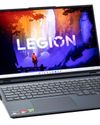A long the coastline of Australia’s New South Wales (NSW) state hovers a fleet of drones, helping to keep the waters safe. Earlier this year, the drones helped lifeguards at the state’s Far North Coast rescue two teenagers who were struggling in heavy surf.

The drones are powered by artificial-intelligence (AI) and machine-vision algorithms that constantly analyze their video feeds and highlight items that need attention: say, sharks, or stray swimmers. This is the same kind of technology that enables Google Photos to sort pictures, a smart home camera to detect strangers, and a smart fridge to warn you when your perishables are close to their expiration dates.
But while those services and devices need a constant connection to the cloud for their AI functions, the NSW drones can perform their image-detection tasks with or without a solid internet connection, thanks to neural compute chips that let them perform deep-learning calculations locally.
These chips are part of a growing trend of edge-computing innovations that enable our software-powered devices to perform at least some critical functions without a constant link to the cloud. The rise of edge computing is helping us to solve problems new and old and pave the way for the next generation of smart devices.
A long the coastline of Australia’s New South Wales (NSW) state hovers a fleet of drones, helping to keep the waters safe. Earlier this year, the drones helped lifeguards at the state’s Far North Coast rescue two teenagers who were struggling in heavy surf.
The drones are powered by artificial-intelligence (AI) and machine-vision algorithms that constantly analyze their video feeds and highlight items that need attention: say, sharks, or stray swimmers. This is the same kind of technology that enables Google Photos to sort pictures, a smart home camera to detect strangers, and a smart fridge to warn you when your perishables are close to their expiration dates.
Diese Geschichte stammt aus der April 2018-Ausgabe von PC Magazine.
Starten Sie Ihre 7-tägige kostenlose Testversion von Magzter GOLD, um auf Tausende kuratierte Premium-Storys sowie über 8.000 Zeitschriften und Zeitungen zuzugreifen.
Bereits Abonnent ? Anmelden
Diese Geschichte stammt aus der April 2018-Ausgabe von PC Magazine.
Starten Sie Ihre 7-tägige kostenlose Testversion von Magzter GOLD, um auf Tausende kuratierte Premium-Storys sowie über 8.000 Zeitschriften und Zeitungen zuzugreifen.
Bereits Abonnent? Anmelden

AUDIO
AUDIO

SMART HOME
SMART HOME

T Mobile
Mobile

Lenovo Legion 5 Pro Gen 7 (2022): Nearly an Editors' Choice
A solid gaming laptop for under 2,000

Apple TV 4K 3rd Generation): Best for the Apple-Centric
A powerful, feature-rich media streamer that’s pricier than most

20 Tips for Leveling Up Your Work-at-Home Game
Whether you're new to working remotely or just looking fo do if beffer, fhese fips can help you stay productive and maintain balance.

12 Google Calendar Tricks You're Probably Not Using
Wondering how to share your Google Calendar? Want to add a new calendar? Here are the tips you need.

SimpliSafe Home Security System: Affordable Ease of Use
Affordable security with a focus on flexibility

Honda Unveils First All-Electric SUV, Built on GM's Battery Platform
The Honda Prologue battery-electric SUV arrives in 2024 and will use the Ultium battery technology developed by General Motors.

We Must Save Streaming Video Before It’s Too Late
A generation of art risks extinction if the companies that own streaming services don’t believe their vast libraries are worth preserving. We have to act now to save it.